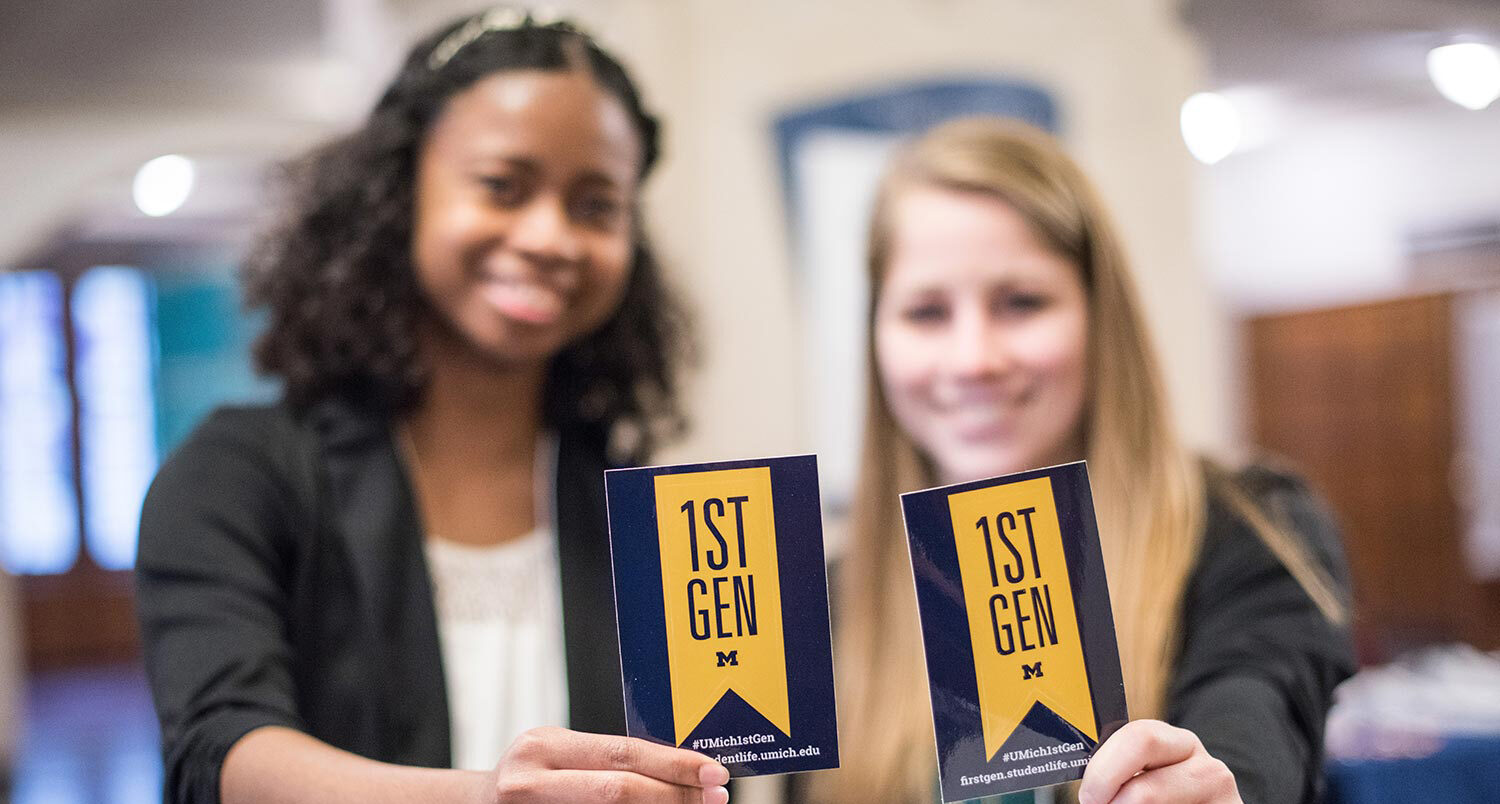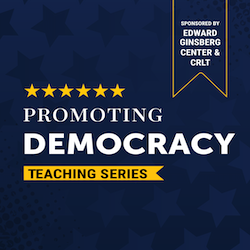 In 2019, 15.3% of all incoming domestic undergraduate U-M students were first-generation college students (FGCS), or students who are the first generation in their family to attend college, up from 8.7% in 2015 (The University Record). The university has been working for years to create supportive conditions for FGCS, many of which have come together recently: in addition to the Kessler Presidential Scholars Program established in 2009, U-M launched a first-gen focused website in 2016, and the First-Generation Student Gateway housed in the Office of Academic Multicultural Initiatives opened in 2017.
In 2019, 15.3% of all incoming domestic undergraduate U-M students were first-generation college students (FGCS), or students who are the first generation in their family to attend college, up from 8.7% in 2015 (The University Record). The university has been working for years to create supportive conditions for FGCS, many of which have come together recently: in addition to the Kessler Presidential Scholars Program established in 2009, U-M launched a first-gen focused website in 2016, and the First-Generation Student Gateway housed in the Office of Academic Multicultural Initiatives opened in 2017.
As the institution expands its focus on FGCS on campus, what can you do as an instructor to better support FGCS in your classroom?
A distinctly heterogeneous group, FGCS come from a wide range of racial/ethnic and socioeconomic backgrounds, belong to many different communities and groups, and they come to U-M with a variety of strengths and challenges. All of these aspects of their backgrounds meaningfully intersect with their experiences as first-generation college students.
There is, however, a common unifying challenge that FGCS experience. Being a first-generation college student generally means having less incoming knowledge about how to navigate the higher education landscape than continuing-generation students (the term given to those whose parents have graduated from college). A common critique found in literature on FGCS is the idea that there is a “hidden curriculum” in higher education: expectations embedded in practices, assignments, content selection, etc., that are unspoken, unwritten, and/or implied. The hidden curriculum obscures what is asked of students by leaning on past customs and practices, privileging continuing-generation students who are more likely to know about or have support systems to help them decipher this hidden curriculum.
In order to provide more equitable instruction for FGCS, consider making what is hidden in your teaching apparent by increasing transparency. While implementing this principle would help all students in your classroom succeed, it would especially benefit FGCS who tend to have less access to opaque college norms.
There are many ways instructors can increase transparency in the classroom. Here are a few specific examples you can implement to support FGCS (a more extensive discussion of transparency can be found in this CRLT blog post about a recent seminar series on this topic):
- Use your role as an instructor to connect your students to university resources outside the classroom. This practice provides a clear way to expand students’ understanding of you as a guide, and to help make transparent the norms of college life. While this collection of U-M Resources Relevant to FGCS can be a helpful starting point, it is important to do more than just give students such a list. By normalizing these resources, democratizing the process of distributing them, and sometimes helping students identify and connect to them individually, you can help FGCS understand that it is a mark of a strong student, not a weak one, to seek out services and supports on campus.
- Writing center example: instead of remedially connecting a student to the Sweetland Writing Center after they have performed poorly on an assignment, highlight the resource to everyone on the first day of class when talking through the syllabus. Two weeks before the assignment is due, send out the link to the website and remind students that now is a good time to book an appointment.
- Explain “common” classroom practices and why/when/how a student would take advantage of them. Try not to assume that practices and resources such as syllabi, office hours, or in-class discussion are common knowledge; find opportunities to explain what practices your class will use, why they benefit students, and how students can best take advantage of them.
- Office hours example: express your enthusiasm to meet your students and your willingness to assist them in thinking about class assignments or career possibilities. Consider ways to equalize access to office hours. Some students (because of work, childcare responsibilities, varying schedules, etc.) cannot make in-person office hours. Increase your flexibility so students have options to connect with you virtually.
- Analyze your assignments for transparency. Are your assignments clear and transparent, or are they operating on assumptions you have made about your students’ prior knowledge, capabilities, experiences, and/or access to resources? Consider providing your rationale for the assignment, your goals for student learning, and a clear layout of what you are expecting, such as a grading rubric. For more ideas, see TILT Higher Ed resource.
- Commit to increasing equity in your classroom through constant reflection. As you work to better support FGCS, reflect on your teaching: where are the places/times that you might have made assumptions about your students’ knowledge, skills, or experiences (e.g., in assignment design, participation expectations, classroom policies)? How could you make those more transparent?
You will find additional strategies for increasing transparency in the first section of this handout on Applying Inclusive Teaching Strategies. To consider a fuller range of principles for inclusive teaching beyond transparency, visit CRLT’s Overview of Inclusive Teaching at Michigan.
- Log in to post comments
- 1587 views






